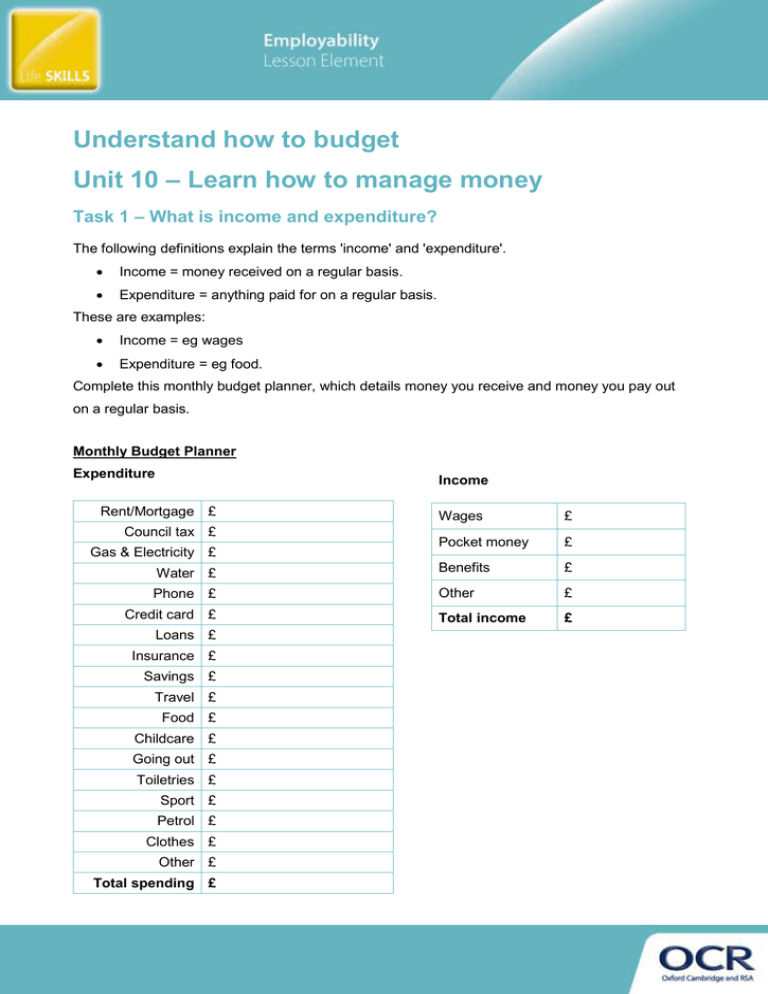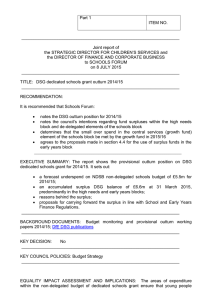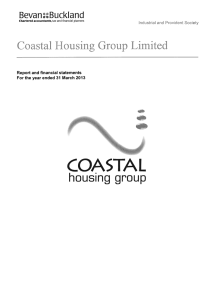Unit 10 - Understand how to budget - Lesson element - Learner Task (DOC, 2MB)
advertisement

Understand how to budget Unit 10 – Learn how to manage money Task 1 – What is income and expenditure? The following definitions explain the terms 'income' and 'expenditure'. Income = money received on a regular basis. Expenditure = anything paid for on a regular basis. These are examples: Income = eg wages Expenditure = eg food. Complete this monthly budget planner, which details money you receive and money you pay out on a regular basis. Monthly Budget Planner Expenditure Income Rent/Mortgage £ Wages £ Pocket money £ Water £ Benefits £ Phone £ Other £ Total income £ Council tax £ Gas & Electricity £ Credit card £ Loans £ Insurance £ Savings £ Travel £ Food £ Childcare £ Going out £ Toiletries £ Sport £ Petrol £ Clothes £ Other £ Total spending £ Subtract the total amount of money you pay out from the total amount of money you receive to identify if you have money left over each month or not. Total Income – Total Expenditure = Money left over I do / do not have money left over at the end of the month. (Circle correct answer) Task 2 – Managing surplus This is a definition of the term 'surplus': Surplus = money available to spend or save each month. Money left over each month could be saved in a savings account. Amounts saved could be put towards a high value item, such as a car. Say whether you identified (from Task 1) that you have a surplus each month or not. Work in small groups to discuss what options are available to spend/save any surplus amount each month. Money left over each month could be: 1. _____________________________________________________________________ 2. _____________________________________________________________________ 3. _____________________________________________________________________ 4. _____________________________________________________________________ 5. _____________________________________________________________________ 6. _____________________________________________________________________ 7. _____________________________________________________________________ Feed this back to the whole class. Task 3 – Different payment methods There are advantages and disadvantages for using different payment methods. This is an example: Using cash An advantage of using cash is that it is handy for making for small payment amounts. A disadvantage of using cash is that it can be easily used by others if it is stolen from you. Work in small groups to identify the advantages and disadvantages of using different payment methods. Your teacher will give your group a payment method to research. My teacher has asked us to research ____________________________________________ as a payment method. Advantages Disadvantages 1. 1. 2. 2. In your group, identify one product (e.g. a mobile phone) and research two different payment methods available (e.g. phone contract), give a justification as to why you would use these methods. Record your findings below and present the information to the class. Our chosen product is a ___________________________________________________________ Payment methods available 1. 2.




